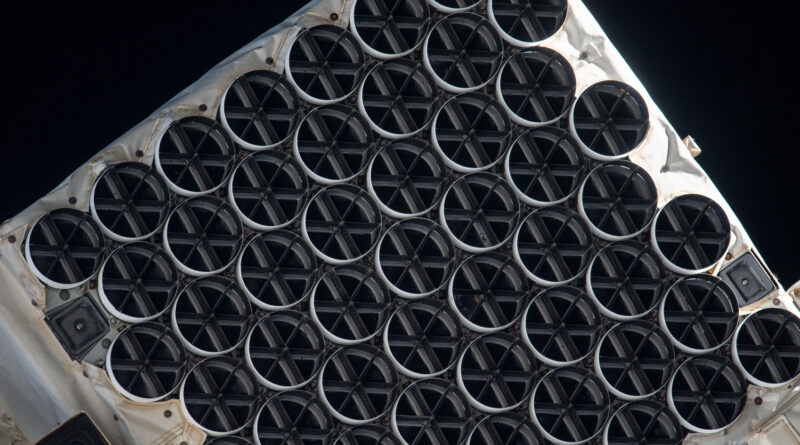NASA’s SpaceX Crew-9 will explore the Space Station – NASA
NASA astronaut Nick Hague and Roscosmos cosmonaut Aleksandr Gorbunov are headed to the International Space Station for the SpaceX Crew-9 mission in September. Once on the station, these workers will support scientific research that includes studies on blood clotting, the effects of humidity on plants grown in space, and changes in vision for scientists.
Details on some of the work planned during the Crew-9 mission are as follows:
Circulating megakaryocytes in the extracellular space (MeF1) investigates how environmental factors affect the development and function of megakaryocytes and platelets. Megakaryocytes, large cells found in the bone marrow, and platelets, fragments of these cells, play an important role in blood clotting and immunity.
“Understanding the development and function of megakaryocytes and platelets during long-duration flight is important to protect the health of astronauts,” said Hansjorg Schwertz, principal investigator at the University of Utah. “Sending megakaryocyte cell cultures into space provides a unique opportunity to explore their complex differentiation process. Microgravity can also affect other blood cells, so the insight we gain may improve our understanding of how flight affects blood cell production.”
The results can provide important knowledge about the risks of inflammatory changes, the immune response, and the formation of tissue in the atmosphere and on the ground.
The Neutron Star Interior Composition Explorer (Enter me) telescope on the outside of the space station measures X-ray radiation emitted by neutron stars and other cosmic objects to help answer questions about matter and gravity.
In May 2023, NICER developed a “bright leak” that allows sunlight to interfere with daytime measurements. Special patches designed to cover some of the damage will be installed in the future of the site, to restore the device to work around the clock.
“This will be the fourth science facility and the first X-ray telescope to be operated by scientists,” said principal investigator Keith Gendreau at NASA’s Goddard Space Flight Center in Greenbelt. , Maryland. “In just one year, we found a problem, designed and tested a solution, and delivered it to launch. The space station team – from managers and safety experts to engineers and astronauts – have helped us to do so. We look forward to returning to normal scientific activities.”
Some astronauts experience vision changes, a condition called Spaceflight-Associated Neuro-ocular Syndrome. The B Complex research is testing whether daily B vitamin supplementation can prevent or reduce this problem and testing how genetics can affect an individual’s response.
Sara Zwart, a senior researcher at the University of Texas Medical Branch in Houston, said: “We don’t know exactly what causes this disease, and not everyone gets it.” “It’s probably a lot of factors, and biological differences that make some scientists more vulnerable than others.”
One such difference can be linked to the metabolic pathway that requires B vitamins to function properly. Dysfunction in this pathway can affect the inner lining of blood vessels, resulting in leakage that can contribute to vision changes. Supplementing with B vitamins that are known to improve blood vessel function may reduce issues in genetically at-risk astrologers.
“The concept of this study is based on 13 years of aerial and ground research,” said Zwart. “We’re excited to finally explore mitigation measures that can reduce the risk of future missions, including to Mars.”
The further people travel from Earth, the more important it is to grow food. Scientists conducted many experiments on the growth of plants in the space station using Veggies hardware, including Veg-01B, which showed that ‘Outredgeous’ red lettuce is suitable for field crop production.
Plant Habitat-07 uses this lettuce to examine how moisture conditions affect the nutritional value and biological safety of plants. The Advanced Plant Habitat it controls humidity, temperature, air, light, and soil moisture, creating the ideal conditions needed for the experiment.
Using a plant that’s known to grow well locally takes the challenging transformation out of the equation, explained Chad Vanden Bosch, senior researcher at Redwire, and this lettuce has also been shown to be safe to eat when grown locally.
“For workers building a base on the Moon or Mars, taking care of the plants may be low on their list of responsibilities, so the processes for growing plants need to be automated,” Bosch said. However, such systems may not provide optimal growing conditions, so we need to know if plants grown under low conditions are safe to eat.”
Melissa Gaskill
International Space Research Communications Group
NASA’s Johnson Space Center
Search this database of scientific experiments to learn more about those mentioned in this article.
#NASAs #SpaceX #Crew9 #explore #Space #Station #NASA
